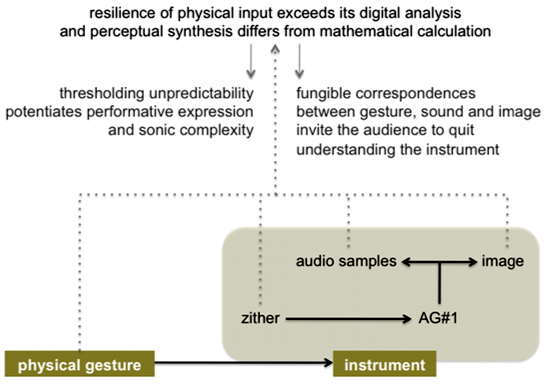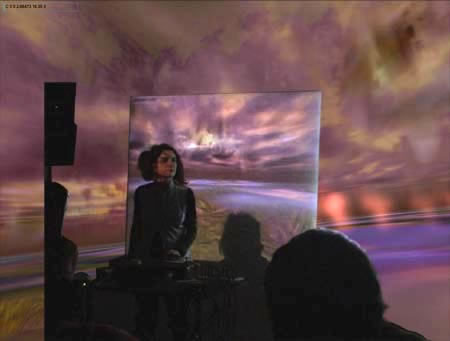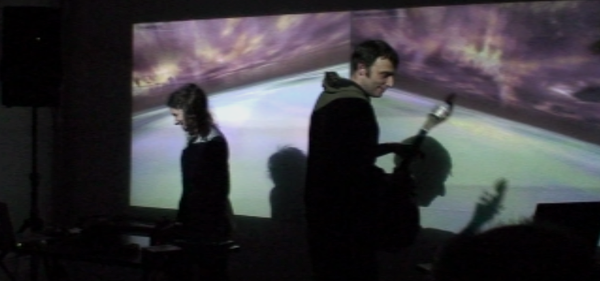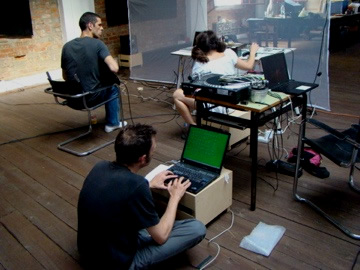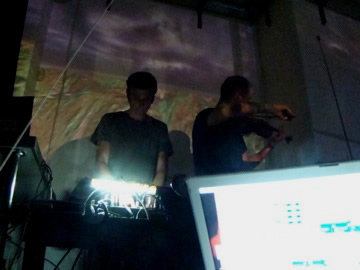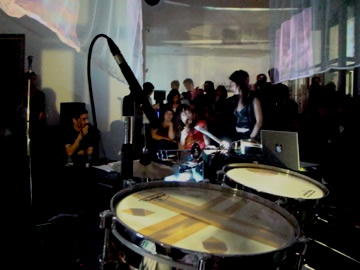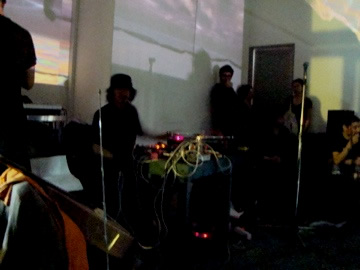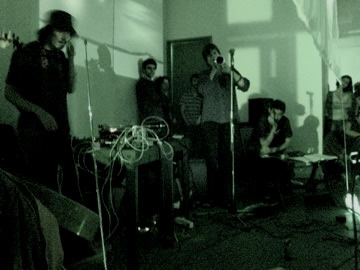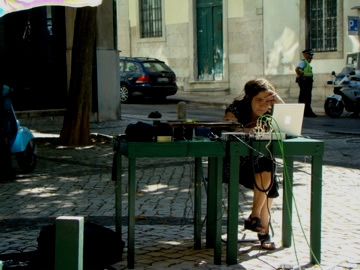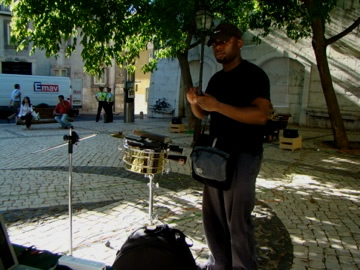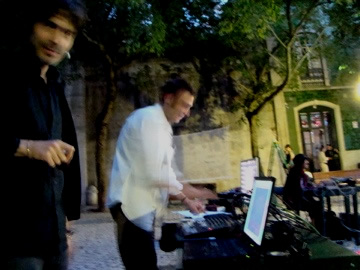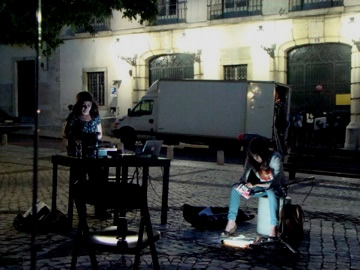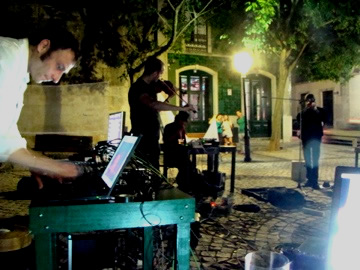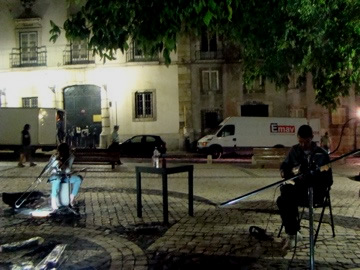adriana sá |
|
| AUDIO-VISUAL RESEARCH |
| Research summary |
|
||||
Theoretical work: |
|||||
| Creative principles | |||||
| Parametric model | |||||
| Parametric representation | |||||
Practical work: |
|||||
| Practice summary | |||||
| AG#1 | |||||
| Arpeggio-Detuning | |||||
| AG#2 | |||||
Technical diagram from the first version of my audio-visual instrument:
|
 |
Demonstration of how AG#1 operated based on the zither input:
To see this full-screen click the button on the bottom-right of the video frame. |
Creative strategies for sonic complexity:
|
Creative strategies for visual continuity:
|
Creative strategies for audio-visual fungibility:
|
||
|
||
AG#1 was developed along with a performance series: WINDOWMATTER. This series includes solo performances and collaborative performances. Solo performances were in Fundão, Moagem do Fundão; in Madrid, at Off-Limits; in NYC, at Share; in London, at St. James Church/ Goldsmiths College in London. Duos with John Klima involved two different, networked versions of AG#1. These duos were performed in Lisbon, at Calouste Gulbenkian Foundation, ZDB, at Festival Bang, at Espaço Avenida ("15 anos Bolsa Ernesto de Sousa"), at Bomba Suicida and Largo do Século. Another duo, with Fala Mariam, was presented at Teatro S. Luis, in Lisbon. The audio architecture and the digital sounds from AG#1 were also modified to operate based on the audio input from other artists. This was explored during a collective residency with John Klima, Toshio Kajiwara, David Maranha, Sei Miguel, Fala Mariam, Cesar Burago, Andre Gonçalves and O.blaat. The performance, which involved several networked versions of AG#1, was shown at Regueirão dos Anjos and Largo do Século, in Lisbon. |
| Adriana Sá solo | audio recording | funding & supports | duo with John Klima | duo with Fala Mariam | audio recording | orchestral version |
SOLO VERSION
Performances: |
||
| GRAPHIC SCORE for a solo performance: |
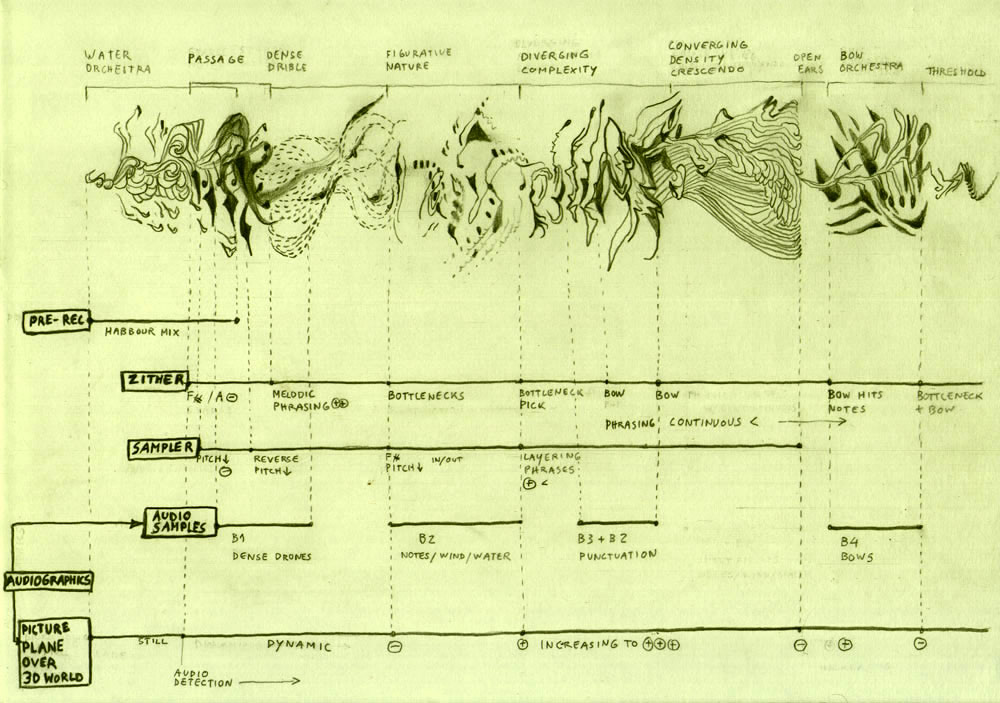
Performances:
|
DUO WITH FALA MARIAM
|
|
|
In this WINDOWMATTER duo I played my zither with aged strings and ambiguous tuning, inputting the AG#1 software. Fala Mariam played her trombone, dry. Each of us made a graphic score, and the sonic construction resulted from their combination. The image was projected upon us both. Performance: Teatro S. Luiz, Lisboa, Portugal, 2010 |
|
ORCHESTRAL VERSION
|
|||||||||||||||||||||||
|
|||||||||||||||||||||||
|
|||||||||||||||||||||||
FUNDING AND SUPPORTS:
|


